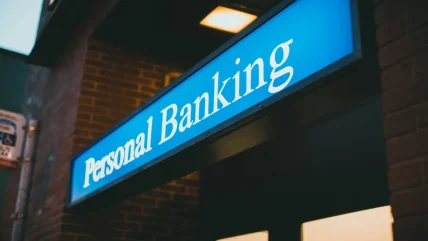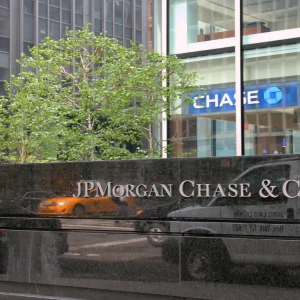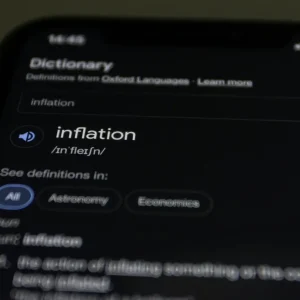
In an era where digital communication dominates, the banking industry faces a dual threat: misinformation and disinformation. These twin perils can disrupt markets, undermine consumer confidence, and potentially lead to significant financial losses. This article explores the nuances of misinformation and disinformation in the banking sector, the impact on stakeholders, and strategies to mitigate these risks.
Understanding Misinformation and Disinformation
Misinformation refers to the unintentional spread of false or inaccurate information. It often arises from a lack of understanding, incomplete information, or genuine mistakes.
Disinformation, on the other hand, is the deliberate dissemination of false information with the intent to deceive. This malicious activity is often designed to manipulate public opinion, influence markets, or cause harm to organisations and individuals.
The Impact on the Banking Industry
The banking sector is particularly vulnerable to these threats due to its reliance on trust and credibility. Here are several key areas where misinformation and disinformation can have a significant impact:
Market Volatility
False information about financial stability, regulatory changes, or economic indicators can lead to significant market fluctuations. For instance, a rumour about a major bank’s insolvency can cause a run on the bank, leading to liquidity crises and destabilising the financial system.
Consumer Confidence
The banking industry relies heavily on consumer trust. Misinformation about data breaches, fraudulent activities, or financial mismanagement can erode this trust, leading to customer attrition and a loss of business.
Regulatory and Compliance Challenges
Banks operate under stringent regulatory frameworks. Disinformation campaigns that target regulatory compliance can create confusion, prompting unnecessary investigations and regulatory scrutiny. This can divert resources from core banking activities and increase operational costs.
Real-World Examples
Several high-profile incidents highlight the dangers of misinformation and disinformation in the banking industry.
The 2008 Financial Crisis
During the 2008 financial crisis, rumours about the solvency of major financial institutions exacerbated the already precarious situation. The spread of misinformation through various channels, including social media, led to panic and further destabilised the financial markets.
Deutsche Bank Rumours
In 2016, Deutsche Bank faced a crisis driven by disinformation. False reports about the bank’s stability and potential government bailouts spread rapidly, leading to a sharp decline in its stock price. The incident underscored the vulnerability of even the largest financial institutions to disinformation campaigns.
Cryptocurrency and Digital Banking
The rise of cryptocurrencies and digital banking has created new avenues for misinformation and disinformation. For example, false news about regulatory crackdowns or technological vulnerabilities can significantly impact the valuations of cryptocurrencies and the credibility of digital banking platforms.
Strategies to Combat Misinformation and Disinformation
To protect themselves and their customers, banks must adopt a multifaceted approach to combat misinformation and disinformation. Here are several strategies that can be effective:
1. Enhanced Monitoring and Intelligence Gathering
Banks need to invest in advanced monitoring systems that can detect and analyse misinformation and disinformation in real-time. This includes social media monitoring, news tracking, and the use of artificial intelligence (AI) to identify patterns and anomalies.
2. Transparent Communication
Clear and transparent communication with stakeholders is crucial. Banks should proactively share accurate information and address rumours or false reports promptly. This can be achieved through press releases, social media updates, and direct communication with customers and investors.
3. Collaboration with Regulators and Industry Bodies
Collaboration with regulatory authorities and industry associations can help in identifying and addressing misinformation and disinformation. Joint efforts can lead to the development of best practices, shared intelligence, and coordinated responses to major incidents.
4. Education and Awareness Programmes
Educating employees, customers, and the public about the dangers of misinformation and disinformation is essential. Awareness programmes can help stakeholders recognise false information and understand the importance of verifying sources before reacting.
5. Legal and Policy Measures
Banks should work with legal experts to understand the regulatory landscape and explore legal avenues to combat disinformation. This can include pursuing legal action against perpetrators and advocating for stronger regulations to deter such activities.
6. Technological Solutions
Leveraging technology is key in the fight against misinformation and disinformation. AI and machine learning can help detect false information, while blockchain technology can enhance transparency and security in financial transactions, making it harder for disinformation to take root.
The Role of Media and Social Platforms
Media outlets and social media platforms play a critical role in the spread of information. Therefore, their cooperation is essential in combating misinformation and disinformation.
Media Responsibility
Media organisations must adhere to strict journalistic standards to ensure the accuracy of their reporting. Fact-checking and responsible journalism are fundamental in preventing the spread of false information.
Social Media Regulation
Social media platforms should implement robust policies to identify and remove disinformation. This includes using AI to detect false content, flagging suspicious posts, and providing users with tools to report misinformation.
Public-Private Partnerships
Public-private partnerships can enhance the fight against misinformation and disinformation. By working together, governments, financial institutions, media, and tech companies can create a more resilient information ecosystem.
Future Trends and Considerations
As technology evolves, the tactics used by those spreading misinformation and disinformation will also advance. Here are some future trends and considerations:
Deepfakes and Synthetic Media
The emergence of deepfake technology and synthetic media poses new challenges. These technologies can create highly convincing fake audio and video content, making it harder to distinguish between real and false information.
Increased Use of AI
AI will play a dual role in the future of misinformation. While it can be used to detect and counteract false information, it can also be employed by bad actors to create and disseminate disinformation more effectively.
Regulatory Developments
Regulations will continue to evolve to address the growing threat of misinformation and disinformation. Financial institutions must stay abreast of these changes and ensure compliance to protect themselves and their customers.
Global Cooperation
Given the global nature of financial markets, international cooperation will be essential in addressing these issues. Sharing information and best practices across borders can enhance the collective ability to combat misinformation and disinformation.
Conclusion
Misinformation and disinformation pose significant risks to the banking industry, impacting market stability, consumer confidence, and regulatory compliance. By understanding these threats and implementing comprehensive strategies, banks can protect themselves and their stakeholders. Through enhanced monitoring, transparent communication, collaboration, education, and technological solutions, the banking sector can build resilience against the dangers of false information. As the landscape continues to evolve, ongoing vigilance and adaptation will be key to maintaining the integrity and trust essential to the financial system.






